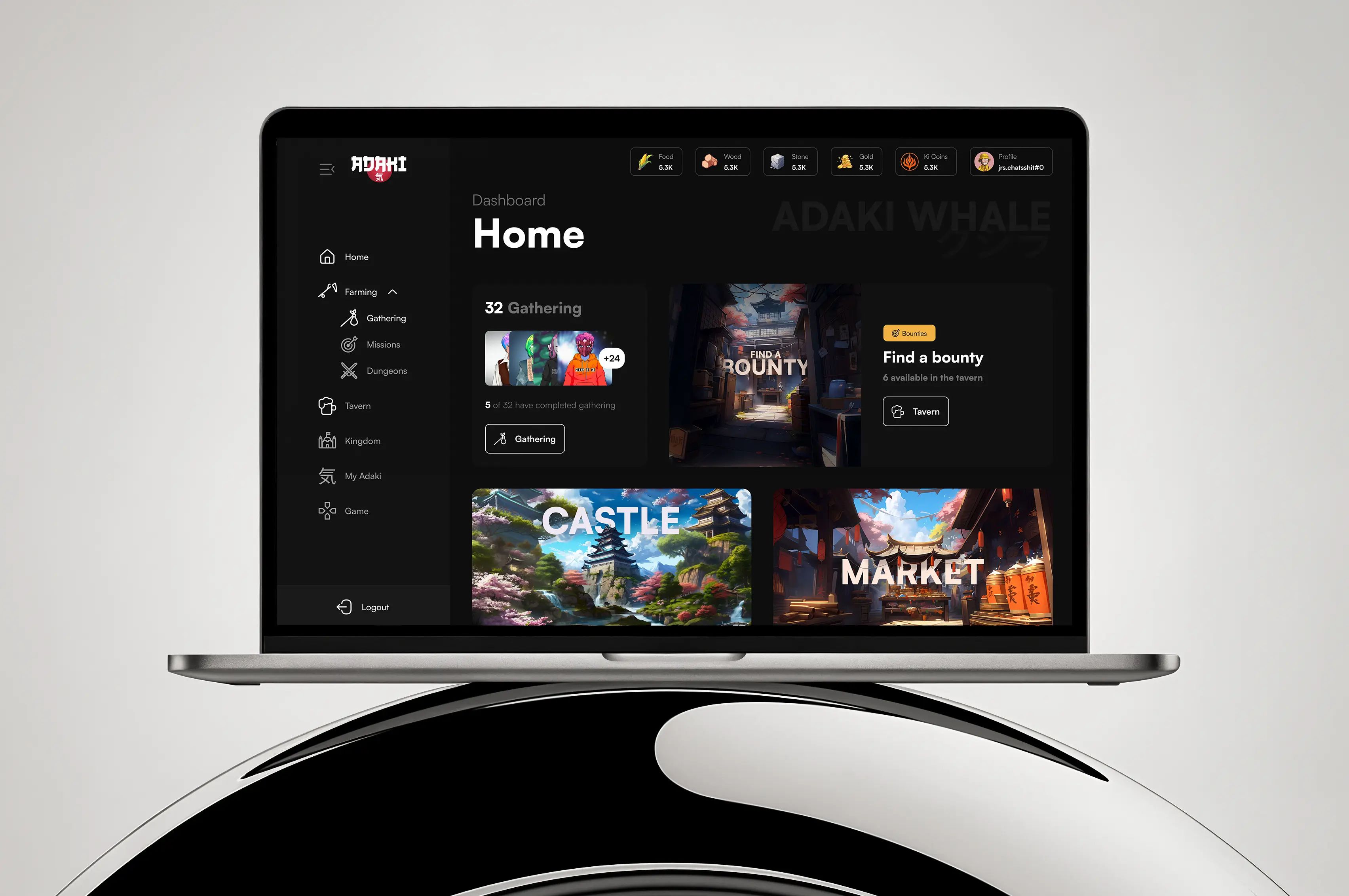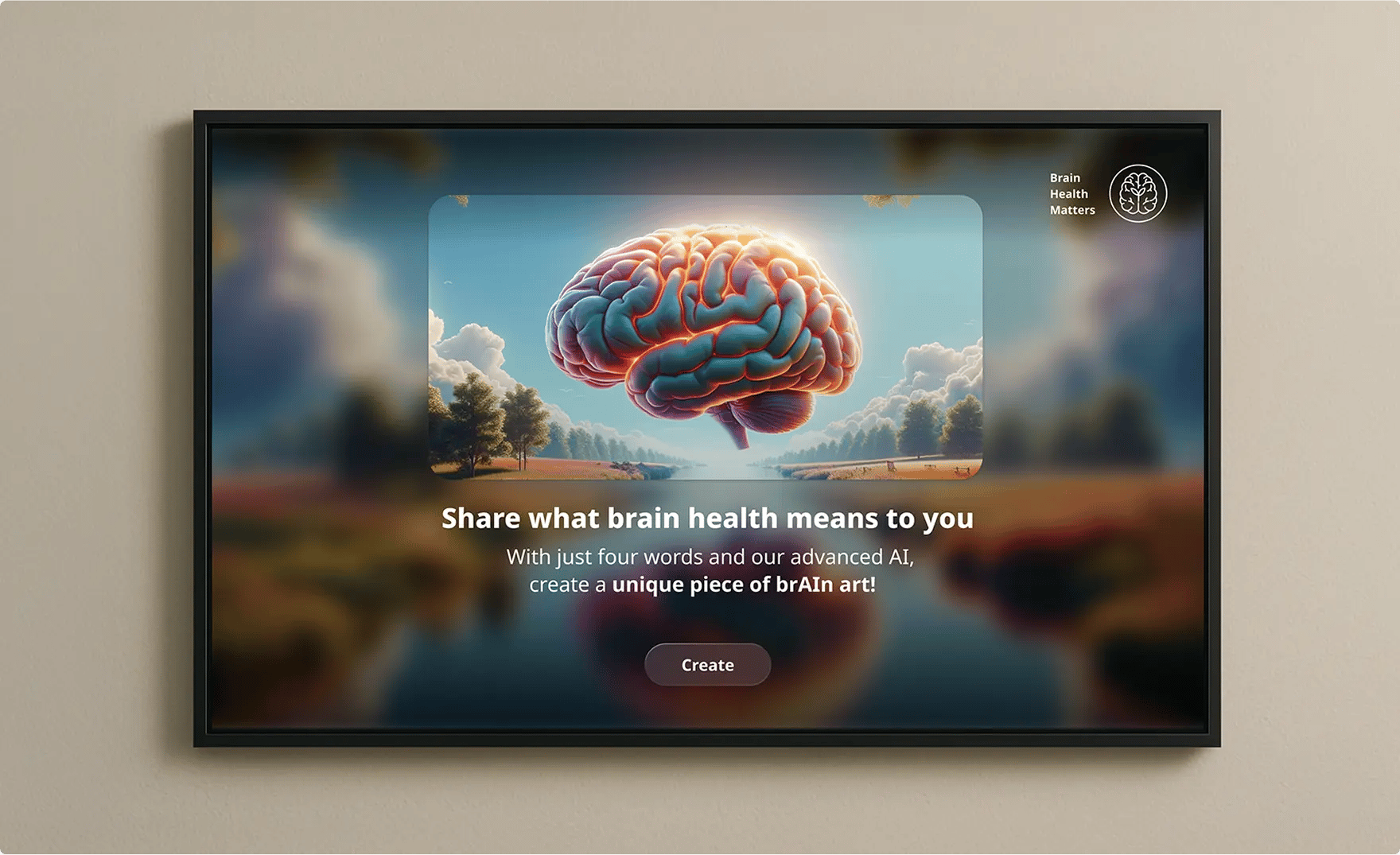
Client:
Global Pharma Client (NDA)
Year:
2024
Role:
UX/UI Lead
Skills:
Product Design + Generative AI + Project Lead
Engaging global Healthcare professionals through the first in person generative AI experience in pharma
Summary
In a highly regulated market like healthcare, getting HCPs to stop and engage isn’t easy. Our goal was to create something bold enough to spark conversations that could lead to deeper discussions around upcoming products.
With generative AI entering the mainstream, we saw an opportunity to do something different. We created the first in-person generative experience in pharma congress history. Using three strategically placed screens, delegates could generate a bespoke image based on four words describing how they felt about brain health. A passive visit became a personal, meaningful interaction.
Impact
The experience was so successful, the client rolled it out at four additional congresses across the US.
67%
Increase in stand footfall
40%
Increase in customer feedback
586
Image generations
5
Award shortlists
Just show me the pics
Step 1
Kick off
The Challenge
A well-known pharma company approached us with a unique brief. With major progress across their drug pipeline, they had secured a stand at a large congress. But due to strict promotional regulations, they couldn’t share any details unless an HCP directly asked a rep.
They needed a way to drive meaningful engagement without directly promoting their latest developments.
The Concept
With generative AI gaining traction, we proposed a bold idea: to become the first pharma company to launch an in-person generative experience at a congress.
Using three screens positioned around the stand, we invited HCPs to generate a bespoke image using four words that described how they felt about brain health. The goal was to draw them in with a personalised interaction that sparked natural conversations.
Considerations
A pioneering concept came with its risks. We needed to:
- Safeguard the generations
- Filter inappropriate language
- Guide delegates through the process
- Ensure consistent image quality and visual style
Step 2
The Journey
The key to the customer journey was guiding delegates from the walkway through to a rep conversation. It started with a large-format passive LED panel on the outside of the stand, displaying a slideshow of previous generations.
Once intrigued, delegates would enter the stand and encounter the first interactive screen, inviting them to create their own image.
At this screen, they were asked to enter four words that described brain health to them. These words were then injected into a controlled and tested prompt. Next, they selected an art style from a predefined set, helping us further manage the variables passed to DALL·E.
While the image was generating, the delegate saw their prompt and style displayed on screen, alongside animated feedback to reduce perceived wait time. Once the image was ready, they could either tweak their input or add it to the gallery wall.
Onscreen instructions then nudged them toward the final step. At the last screen, they viewed their image with prompts to share it on social media. This completed the experience and brought them naturally to the rep.

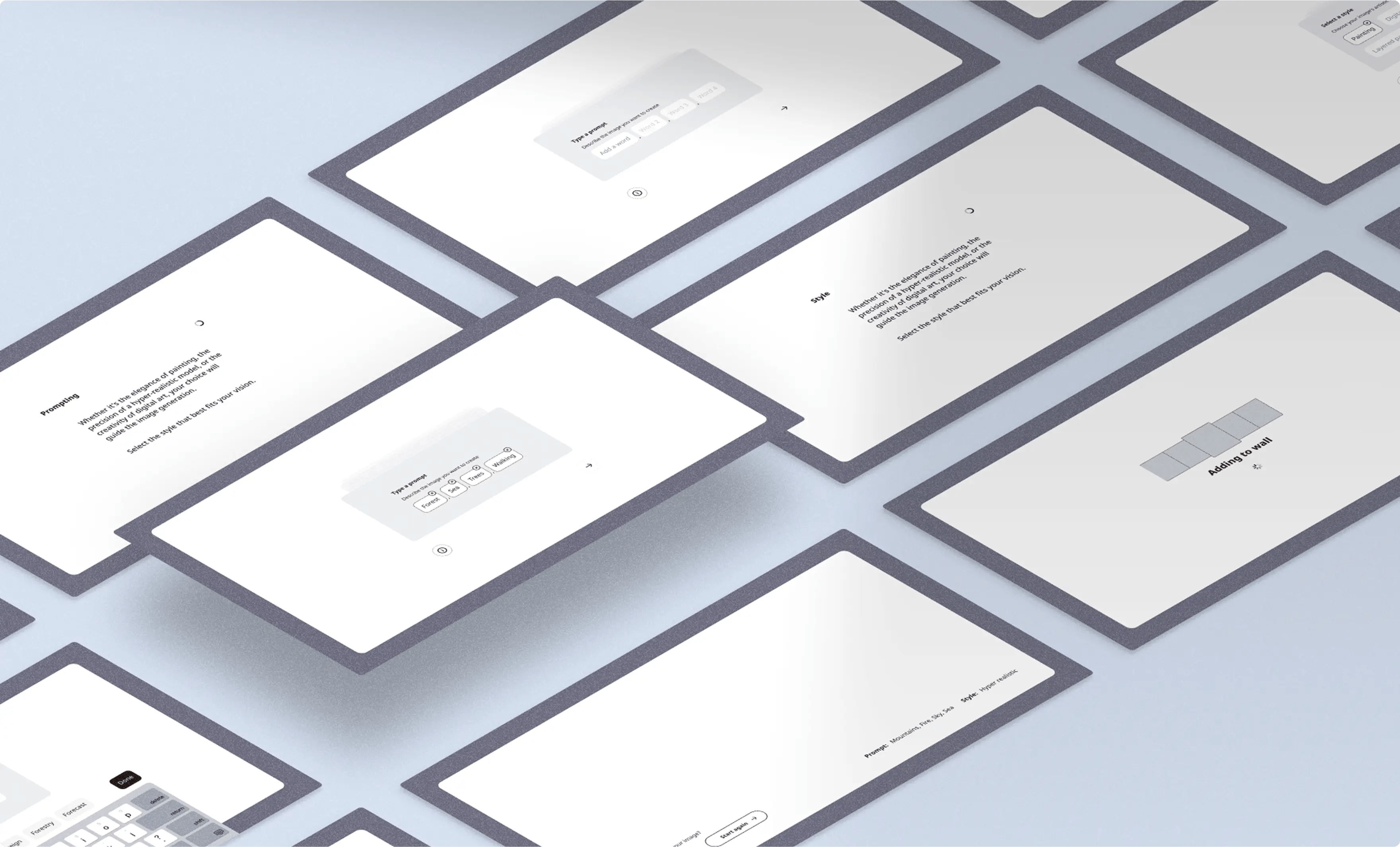
Step 3
Design
Look & Feel
With an idea this new, we had to step outside the usual brand playbook. The aim was to create something bold enough to stop people in their tracks. That meant blending key brand elements with a fresh foundation it could actually sit on.
The visuals needed to do the heavy lifting. We went for a mix of bold, AI-generated imagery and a glass-like UI that let the colours take centre stage. The card-based layout kept everything grounded, while the core blue and white iconography acted as subtle anchors to the original brand.
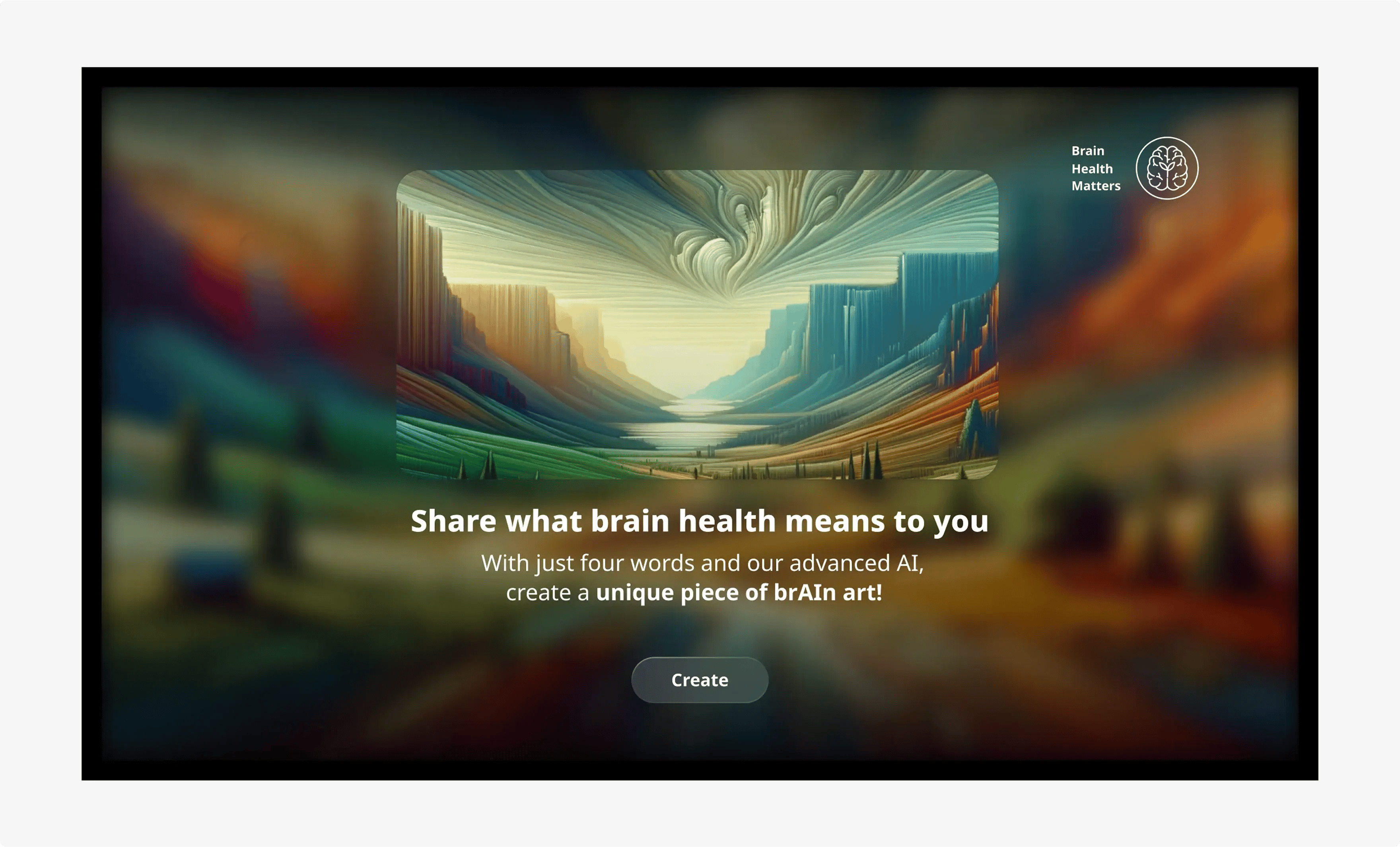
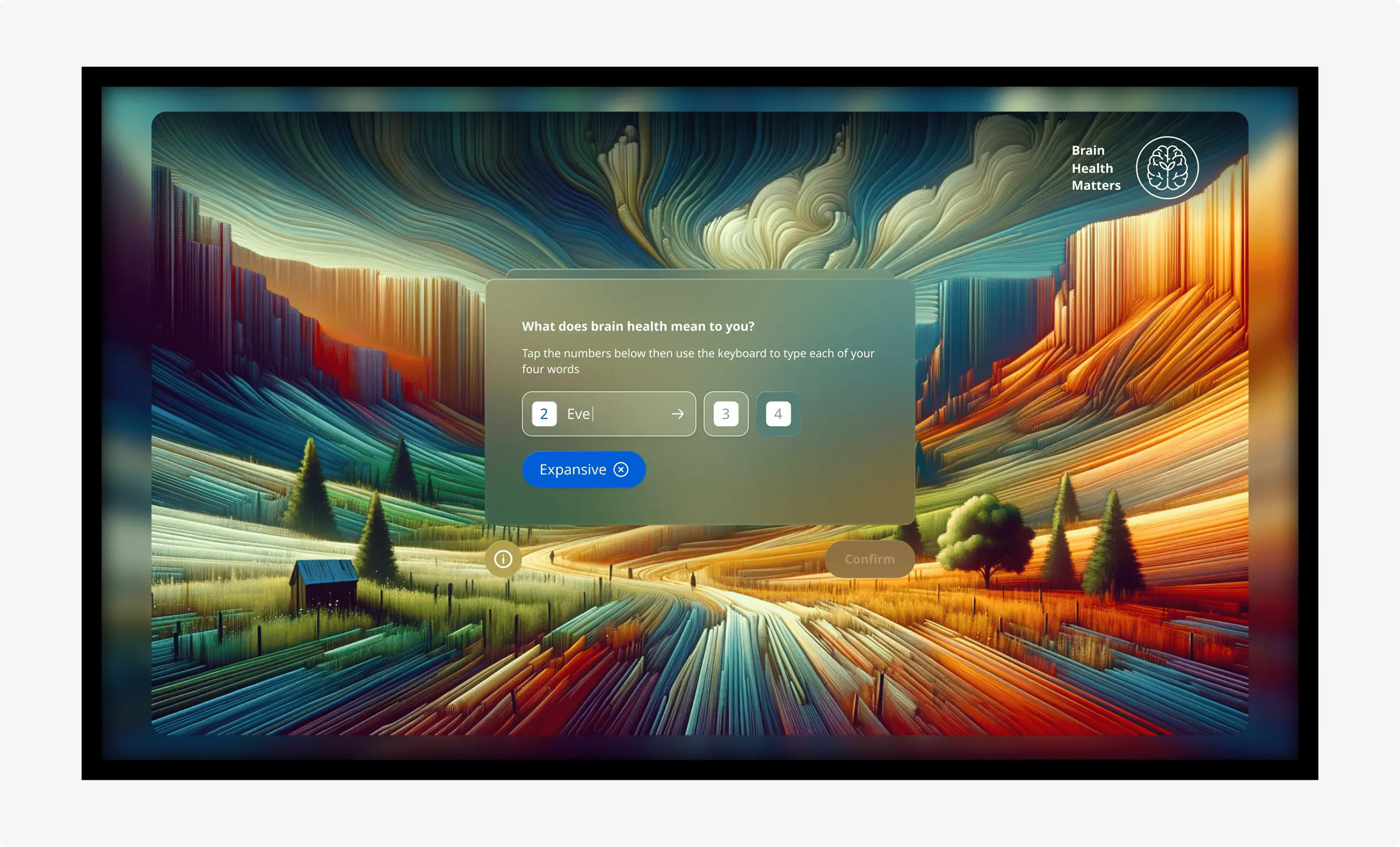
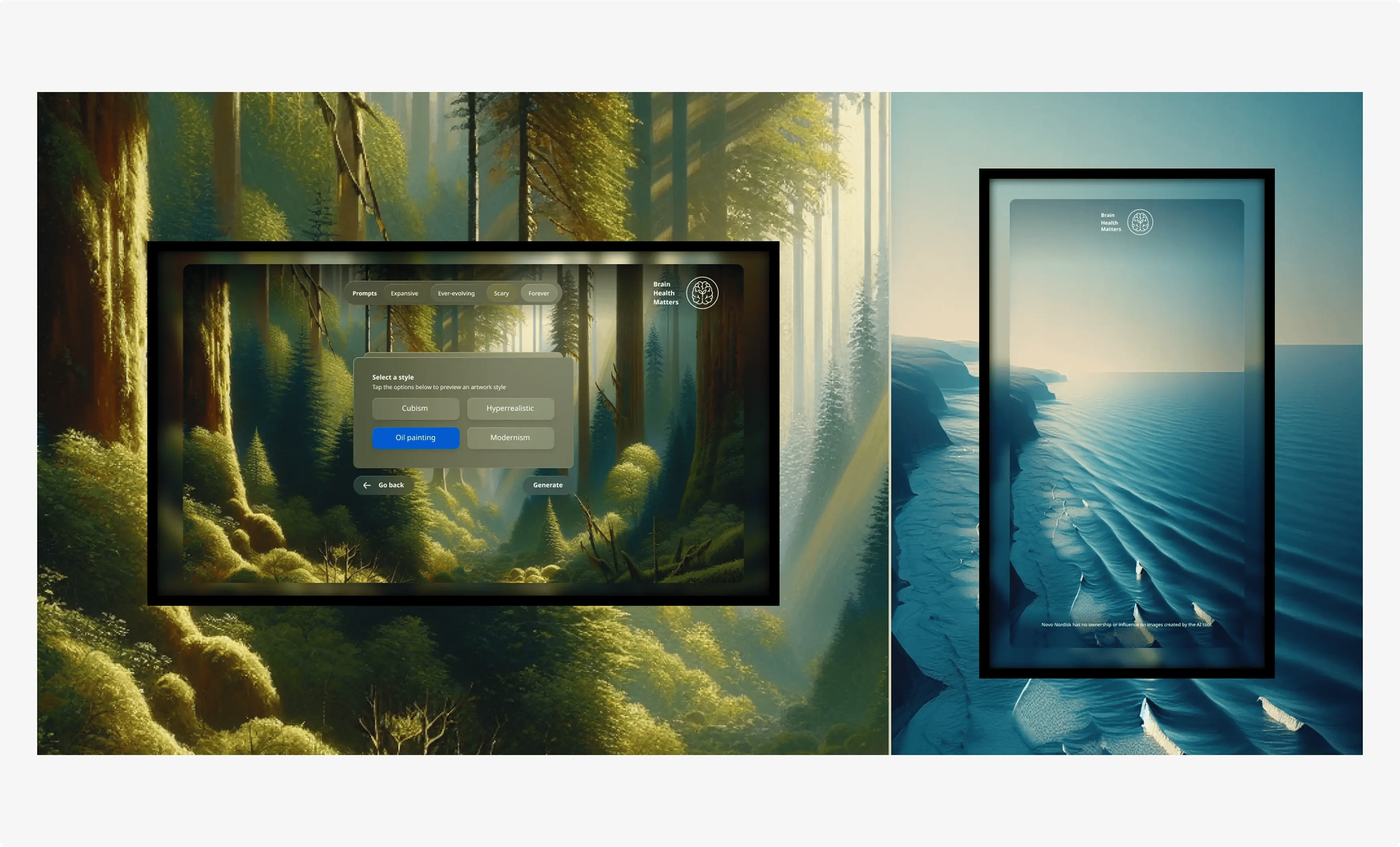
Design considerations
Onboarding and guiding delegates through the experience was crucial. We broke each step down into individual input fields, making it clear what was expected without needing instructions. Each word sat in its own box, and the style selection came later on a separate screen, the structure itself implied how to use it.
For anyone unsure, optional onboarding pop-ups were available to give extra context. This meant reps didn’t have to step in, keeping the experience self-led.
We limited the options to four core art styles and gave an instant preview as soon as a style was selected. This removed friction and helped delegates feel in control.
While images were generating, we ran a custom animation of the brain logo. Paired with their chosen inputs on screen, it held attention and let them imagine what might appear, keeping them engaged and reducing perceived wait time.
Step 4
AI Prompting
In 2024, generating consistent images was no easy task. Letting delegates write their own prompts was out of the question, so we built the system around controlled injection. Delegate choices were fed into a pre-engineered base prompt designed for consistency.
Because of the nature of the event and the limitations of image generation at the time, we focused heavily on what to exclude. We explicitly blocked anything that could derail the output, including animals, faces, anime, anatomy, cartoons, people, text, and words.
To get the best results, we had to describe the type of image we wanted with clear direction. This meant leaving very little to chance. Each art style required its own bespoke prompt rather than acting as a simple variable.
We also spent a lot of time testing the worst-case inputs. Banned words were filtered before injection, but even borderline or ambiguous terms that passed the filter were run through rigorous testing to safeguard future outputs.
Oil Painting

Using {{Word 1}}, {{Word 2}}, {{Word 3}} and {{Word 4}} as inspirations; craft a digital painting that explores the abstract beauty of an impressionist landscape. The composition should be landscape-oriented, with the subject centrally located, convey the intensity of the scene through dynamic brushstrokes and a moody colour palette.
DO NOT INCLUDE: animals; faces; anime; anatomy; cartoon; humans; text; words.
Hyper Realism

Craft a highly photorealistic, cinematic landscape image inspired by {{Word 1}}, {{Word 2}} , {{Word 3}} and {{Word 4}}. The overall colour grading should be natural and subdued, with a focus on the interplay of shadow and light. The composition should be landscape-oriented, with the subject centrally located.
DO NOT INCLUDE: animals; faces; anime; anatomy; cartoon; humans; text; words.
Step 5
Results
The experience ran for three days and saw strong engagement, with over 100 participants each day and close to 200 images generated at peak. It sparked meaningful conversations between delegates and reps, proving its value beyond the initial interaction.
After its success, the concept was rolled out across multiple US events, continuing to build momentum around the company’s brain health initiatives.
To keep things consistent, we built a lightweight design system with reusable UI components and visual guidelines. This gave the team a scalable foundation to evolve the experience without losing cohesion.
The outcome showed how powerful generative AI can be when thoughtfully applied in healthcare. It created moments that stood out and actually drove engagement.
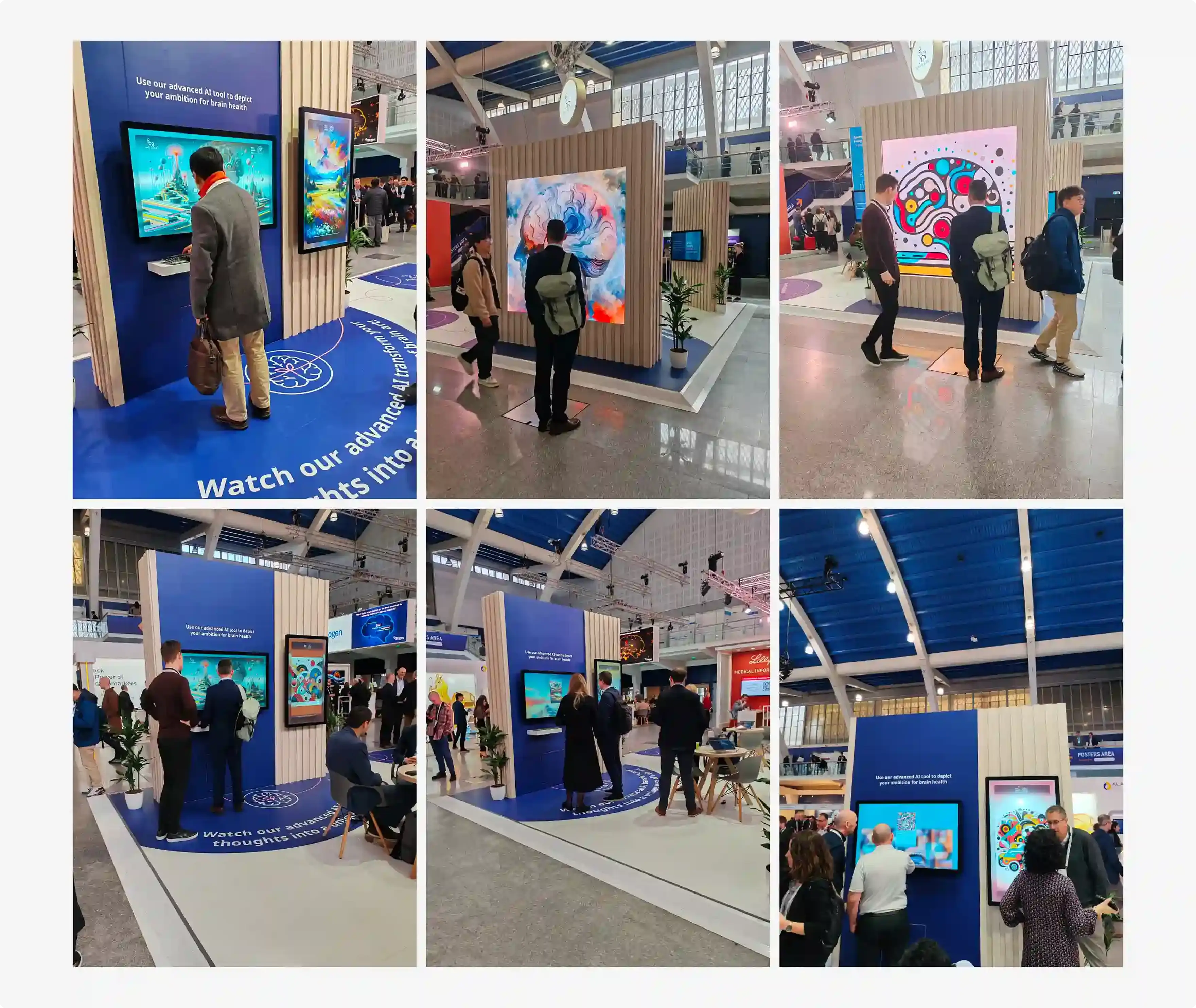
Project
Up Next
Client:
Adaki
Year:
2023–2024
Skills:
Product/Motion/Game Design + NFT/Blockchain + Public speaking
Putting user experience at the forefront of NFT utility: the next generation of blockchain-powered idle gaming
Find out How
